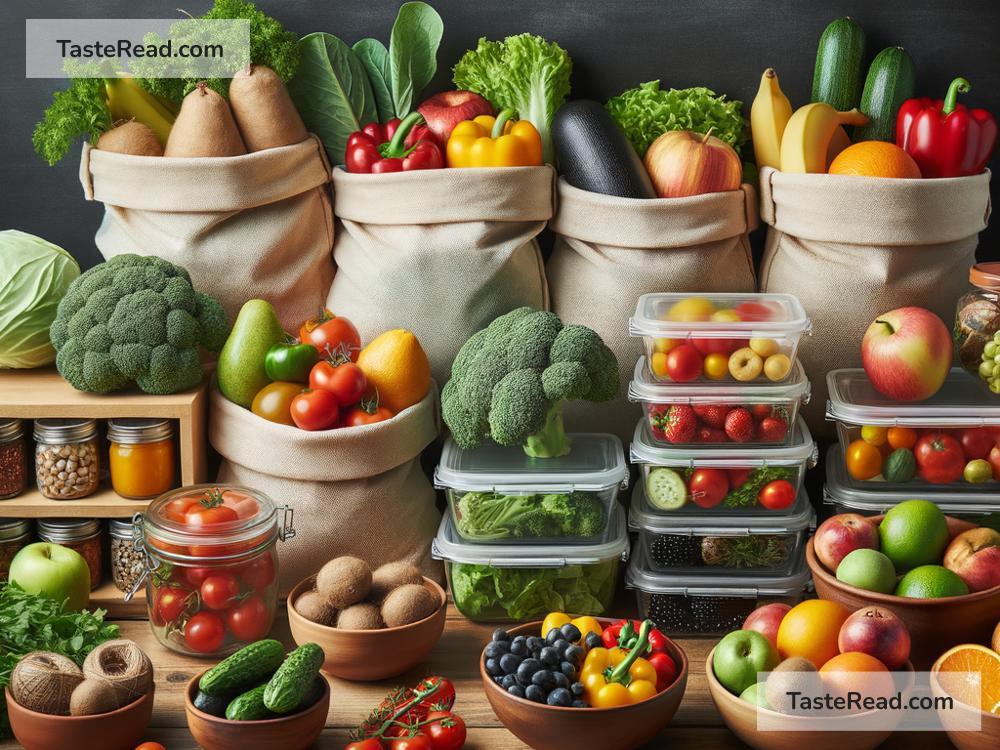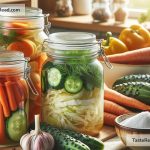Zero-Waste Tips for Storing Fresh Produce
In an age where sustainability is more than just a buzzword, reducing waste, especially in our kitchens, is paramount. A significant part of this initiative involves how we store our fresh produce. The right storage methods can not only decrease food waste but also retain the freshness and nutritional value of fruits and vegetables for longer periods. Here are some simple, zero-waste tips for storing your fresh produce:
1. Understand Your Produce
The first step in storing fresh produce correctly is understanding that not all fruits and vegetables are stored the same way. Some items do better in cool, dark places, while others prefer room temperature. For instance, potatoes, onions, and garlic should be kept in a cool, dark, and well-ventilated area, but not in the fridge. On the other hand, leafy greens and most berries thrive in cooler temperatures, making the fridge an ideal spot.
2. Ditch the Plastic
Plastic bags and wraps are not friends of the environment. Instead of using them, opt for reusable containers or sustainable wraps. Beeswax wraps, cloth produce bags, and glass containers are great alternatives. These options allow your produce to ‘breathe’ better, reducing moisture buildup that leads to premature rotting.
3. Use Mason Jars for Herbs
Herbs like cilantro, parsley, and basil can be stored effectively in mason jars filled with a little water. Just like flowers, these herbs can last longer when their stems are submerged. Cover the tops with a small, breathable bag, and you’ll find they stay fresh for much longer. Remember to change the water every few days.
4. Revive with Water
If you find your leafy greens looking a bit wilted, don’t throw them out just yet! Soaking them in a bowl of cold water for a few minutes can miraculously revive them, bringing back their crispness and vitality. This trick works wonders for salad leaves and herbs that have lost their perkiness.
5. Keep Fruits and Vegetables Separate
Some fruits, like apples and bananas, produce a gas called ethylene as they ripen. This gas can prematurely ripen and spoil neighboring produce. Therefore, it’s wise to store ethylene-producing fruits separately from other fruits and vegetables. This simple segregation can greatly extend the shelf life of your produce.
6. Utilize the Fridge’s Crisper Drawers
Many refrigerators come equipped with crisper drawers designed specifically for fruits and vegetables. These drawers often have adjustable humidity settings that can be optimized based on what you’re storing. Generally, leafy greens prefer high humidity, while fruits and veggies like bell peppers and grapes do better in lower humidity.
7. Breathability Is Key
Ensure that any bags or containers you use for storage are not completely sealed. Many vegetables and fruits require air circulation to stay fresh. Punching a few holes in bags or leaving containers slightly open can prevent anaerobic conditions that lead to spoilage.
8. Freeze with Care
If you have excess produce that you won’t be able to consume in time, consider freezing them. Most fruits and vegetables freeze well, but some benefit from blanching (briefly boiling) before freezing to preserve their quality. Remember to use reusable containers or compostable freezer bags to stay in line with zero-waste principles.
9. Practice First In, First Out (FIFO)
This simple principle involves using older items before newer ones. When you bring home fresh produce, move the older items to the front and place the new ones in the back. This rotation ensures that you use your produce while it’s fresh and reduces waste.
10. Embrace Imperfections
Lastly, it’s important to remember that fruits and vegetables don’t need to look perfect to be edible. Slightly bruised or oddly shaped produce is often just as nutritious and delicious as their ‘perfect’ counterparts. By using these items rather than discarding them, you’re contributing to a more sustainable and less wasteful world.
Implementing these zero-waste tips doesn’t just contribute to a healthier planet; it also promotes a more sustainable lifestyle at home. By taking small steps towards smarter storage, we can significantly reduce food waste, save money, and enjoy fresher, tastier produce. So, the next time you come home with a bounty of fresh fruits and vegetables, remember these simple, eco-friendly storage solutions. Together, we can make a difference, one vegetable at a time.


